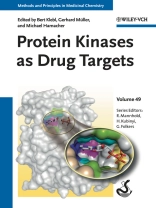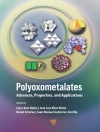This timely guide to kinase inhibitor drug development is the first to cover the entire drug pipeline, from target identification to compound development and clinical application. Edited by the pioneers in the field, on the drug development side this ready reference discusses classical medicinal chemistry approaches as well as current chemical genomics strategies. On the clinical side, both current and future therapeutic application areas for kinase inhibitor drugs are addressed, with a strong focus on oncology drugs.
Backed by recent clinical experience with first-generation drugs in the battle against various forms of cancer, this is crucial reading for medicinal, pharmaceutical and biochemists, molecular biologists, and oncologists, as well as those working in the pharmaceutical industry.
Tabla de materias
Preface
PART I: Hit Finding and Profiling for Protein Kinases: Assay Development and Screening, Libraries
IN VITRO CHARACTERIZATION OF SMALL-MOLECULE KINASE INHIBITORS
Introduction
Optimization of a Biochemical Kinase Assay
Measuring the Binding Affinity and Residence Time of Unusual Kinase Inhibitors
Addressing ADME Issues of Protein Kinase Inhibitors in Early Drug Discovery
SCREENING FOR KINASE INHIBITORS: FROM BIOCHEMICAL TO CELLULAR ASSAYS
Introduction
Factors that Influence Cellular Efficacy of Kinase Inhibitors
Assays for Measurement of Cellular Kinase Activity
Outlook
DISSECTING PHOSPHORYLATION NETWORKS: THE USE OF ANALOGUE-SENSITIVE KINASES AND MORE SPECIFIC KINASE INHIBITORS AS TOOLS
Introduction
Chemical Genetics
The Application of ASKA Technology in Molecular Biology
Conclusions and Outlook
PART II: Medicinal Chemistry
RATIONAL DRUG DESIGN OF KINASE INHIBITORS FOR SIGNAL TRANSDUCTION THERAPY
The Concept of Rational Drug Design
3D Structure-Based Drug Design
Ligand-Based Drug Design
Target Selection and Validation
Personalized Therapy with Kinase Inhibitors
The NCLtm Technology and Extended Pharmacophore Modeling (Prediction-Oriented QSAR)
Non-ATP Binding Site-Directed or Allosteric Kinase Inhibitors
The Master Keys for Multiple Target Kinase Inhibitors
Conclusions
KINASE INHIBITORS IN SIGNAL TRANSDUCTION THERAPY
VEGFR (Vascular Endothelial Growth Factor Receptor)
Flt3 (FMS-Like Tyrosine Kinase 3)
Bcr-Abl (Breakpoint Cluster Region-Abelson Murine Leukemia Viral Oncogene Homologue)
EGFR (Epidermal Growth Factor Receptor)
IGFR (Insulin-Like Growth Factor Receptor)
FGFR (Fibroblas Growth Factor Receptor)
PDGFR (Platelet-Derived Growth Factor Receptor )
c-Kit
Met (Mesenchymal-Epithelial Transition Factor)
Src
p38 MAPKs (Mitogen-Activated Protein Kinases)
ERK1/2
JNK (c-Jun N-Terminal Kinase, MAPK8)
PKC (Protein Kinase C)
CDKs (Cyclin-Dependent Kinases)
Auroras
Akt/PKB (Protein Kinase B)
Phosphoinositide 3-Kinases
Syk (Spleen Tyrosind Kinase)
JAK (Janus Kinase)
Kinase Inhibitors in Inflammation and Infectious Diseases
DESIGN PRINCIPLES OF DEEP POCKET-TARGETING PROTEIN KINASE INHIBITORS
Introduction
Classification of Protein Kinase Inhibitors
Type II Inhibitors
Common Features of Type II Inhibitors
Design Strategies for Type II Inhibitors
Comparative Analysis of the Different Design Strategies
Conclusions and Outlook
FROM DISCOVERY TO CLINIC: AURORA KINASE INHIBITORS AS NOVEL TREATMENTS FOR CANCER
Introduction
Biological Roles of the Aurora Kinases
Aurora Kinases and Cancer
In Vitro Phenotype of Aurora Kinase Inhibitors
Aurora Kinase Inhibitors
X-Ray Crystal Structures of Aurora Kinases
Summary
PART III: Application of Kinase Inhibitors to Therapeutic Indication Areas
DISCOVERY AND DESIGN OF PROTEIN KINASE INHIBITORS: TARGETING THE CELL CYCLE IN ONCOLOGY
Protein Kinase Inhibitors in Anticancer Drug Development
Structure-Guided Design of Small-Molecule Inhibitors of the Cyclin-Dependent Kinases
Catalytic Site Inhibitors
ATP Site Specificity
Alternate Strategies for Inhibiting CDKs
Cyclin Groove Inhibitors (CGI)
Inhibition of CDK-Cyclin Association
Recent Developments in the Discovery and the Development of Aurora Kinase Inhibitors
Development of Aurora Kinase Inhibitors through Screening and Structure-Guided Design
Aurora Kinase Inhibitors in Clinical Trials
Progress in the Identification of Potent and Selective Polo-Like Kinase Inhibitors
Development of Small-Molecule Inhibitors of PLK1 Kinase Activty
Discovery of Benzthiazole PLK1 Inhibitors
Recent Structural Studies of the PLK1 Kinase Domain
Additional Small-Molecule PLK1 Inhibitors Reported
The Polo-Box Domain
Future Developments
MEDICINAL CHEMISTRY APPROACHES FOR THE INHIBITION OF THE p38 MAPK PATHWAY
Introduction
p38 MAP Kinase Basics
p38 Activity and Inhibition
First-Generation Inhibitors
Pyridinyl-Imidazole Inhibitor: SB203580
N-Substituted Imidazole Inhibitors
N, N’-Diarylurea-Based Inhibitors: BIRB796
Structurally Diverse Clinical Candidates
Medicinal Ch
Sobre el autor
Bert Klebl is an expert in small molecule based drug discovery. Currently, he is managing director and CSO of Lead Discovery Center Gmb H, which was started by Max-Planck Innovation and the Max-Planck Society. Before, he was at GPC Biotech, Axxima Pharmaceuticals and Aventis (Hoechst Marion Roussel). A biochemist by training, he graduated from the University of Konstanz, Germany, and did post-doctoral work at the Biotechnology Research Institute in Montréal, Canada.
Gerhard Müller received his Ph D in Organic Chemistry in 1992 from the Technical University of Munich, working with Horst Kessler. After two years in the Medicinal Chemistry Department of Glaxo Verona (Italy), he joined the Central Research Facility of Bayer AG in Leverkusen. From 2001 to 2003 he headed the chemistry department of Organon’s Lead Discovery Unit is Oss, Netherlands. In 2003 he was nominated CSO of Axxima Pharmaceuticals AG in Munich, and upon its acquisition through GPC Biotech AG in 2005, he became GPC’s Vice President Drug Discovery. Since 2008 he is CSO and Managing Director of Proteros Fragments Gmb H, specializing in fragment-based lead generation. Apart from numerous scientific articles and patents, he co-edited the ‘Chemogenomics in Drug Discovery’ book of this series on medicinal chemistry.
Michael Hamacher studied biology at the Heinrich-Heine-Universität in Düsseldorf, Germany. Subsequent to his Ph D, he joined the Medizinisches Proteom-Center, Ruhr-Universität Bochum, Germany, and became Head of Administration of the MPC, responsible for the implementation and the strategical planning of the Human Brain Proteome Project under the roof of the Human Proteome Organisation (HUPO BPP) among others. In 2008, he moved to the Lead Discovery Center Gmb H, Dortmund, Germany, for the same position, focussing on preparing national as well as international funding applications, on project management, budgeting as well as human resources. He applied and implemented numerous projects in early pharmaceutical research.












